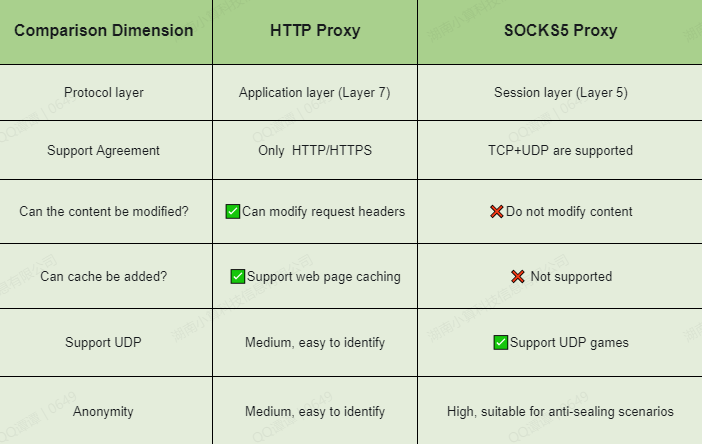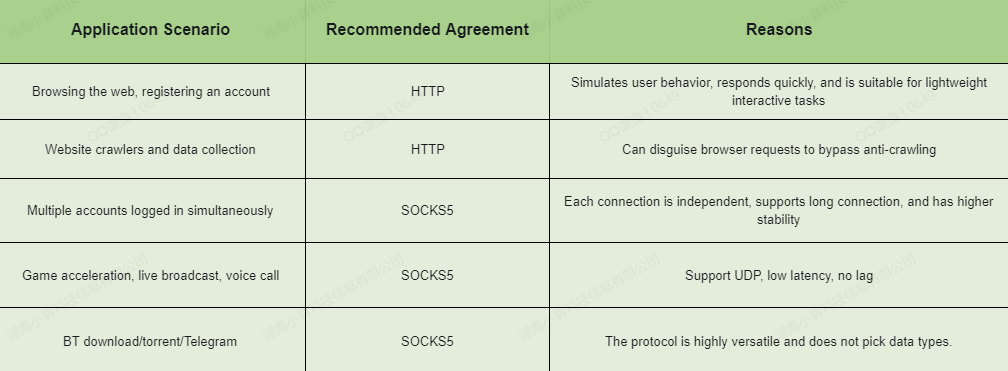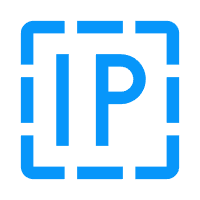[Dry Goods] Analysis of the underlying logic and practical application scenarios of HTTP and SOCKS5
Among the various proxy protocols provided by OwlProxy, SOCKS5 and HTTP are the two most commonly used and widely used. However, many users are still confused about the differences between them when choosing between them.
Simply put, a proxy is like a "middleman" that forwards your network requests; the proxy protocol is the method of communication between you and this "middleman." Different protocols are suitable for different use cases and needs.
Different protocols determine what you can do, what scenarios they're suitable for, and even whether platforms will detect your requests. The logic behind HTTP and SOCKS5 differ significantly.
HTTP proxy protocols: When forwarding and transmitting your information, they not only help you forward it but also "polish" and "process" your requests, making you appear to be a legitimate user.
They can modify request information (e.g., spoofing browsers and language preferences).
They can cache web content for faster access next time.
They can simulate clicks and form completion.
However, they can be easily detected as "proxying," for example, by web pages detecting that your IP address is fake.
Suitable for:
Web browsing
Registering an account
Crawling websites (scraping)
Scripting and automating web operations
SOCKS5 proxy protocol: It delivers whatever you give it, unmodified and uncensored.
Supports all protocols: Whether you're sending web pages, videos, or voice messages, it can deliver them.
Supports UDP (essential for gaming and live streaming).
Provides greater privacy and is less susceptible to detection.
However, it won't help you optimize your website, and doesn't understand clickthroughs or simulated logins.
Suitable for:
Watching live streams, playing games, connecting to Telegram
Concurrently operating multiple accounts
Downloading BitTorrent and torrent files
Building your own scripts or programs that require a universal proxy
SOCKS5 supports not only standard TCP traffic but also UDP. It cannot be used as an HTTP proxy.
What is UDP?
Simply put, it's a faster and lighter-weight transmission method than TCP. It lacks connection confirmation and retransmission mechanisms, resulting in extremely fast speeds and extremely low latency, making it ideal for applications requiring high real-time performance, such as online gaming, live streaming, voice calls, and P2P downloads.
For this reason, SOCKS5 is often the preferred choice for applications like game accelerators, live streaming scripts, or those requiring concurrent transmission of multiple accounts. It can forward these complex data types intact, providing not only strong compatibility but also a smoother network experience.
You can watch the overseas live broadcast to learn more about TCP and UDP!
Bottom layer protocol structure table:

Demonstration: How to use HTTP and SOCKS5?
Example 1: Using curl to test an HTTP proxy accessing an HTTPS website.
The client first establishes a connection with the proxy using a CONNECT request.
The proxy returns a 200: Connection Established response.
Subsequent data flows through this tunnel, acting like a "small tunnel." When you capture packets, you can see the target website's address exposed in plaintext!
Example 2: Use Python to simulate SOCKS5 proxy to send UDP packets;
import socketimport sockssocks.set_default_proxy(socks.SOCKS5, "1.2.3.4", 1080)socket.socket = socks.socksocketwith socket.socket(socket.AF_INET, socket.SOCK_DGRAM) ass: s.sendto(b"Test UDP", ("google.com", 443))
A UDP packet can be sent successfully! This is impossible to achieve in HTTP proxy.
Which protocol should I choose based on my actual use case?
HTTP is the preferred protocol for web-based tasks, while SOCKS5 is the preferred protocol for tasks with complex traffic, high concurrency, and persistent connections.

Whether you use HTTP or SOCKS5, if you're using a black IP or a previously blocked IP, you'll still be subject to platform risk control. Choosing the wrong proxy node can result in speed limits at best, or even account suspension and disconnection at worst.
OwlProxy's proxy nodes are all run from real home networks, ensuring a clean and stable environment. They support common HTTP and SOCKS5 protocols and offer flexible node switching by country or city to meet your specific needs. We also provide an API for easy integration with automated scripts and large-scale business scheduling, helping you efficiently address a variety of application scenarios.








